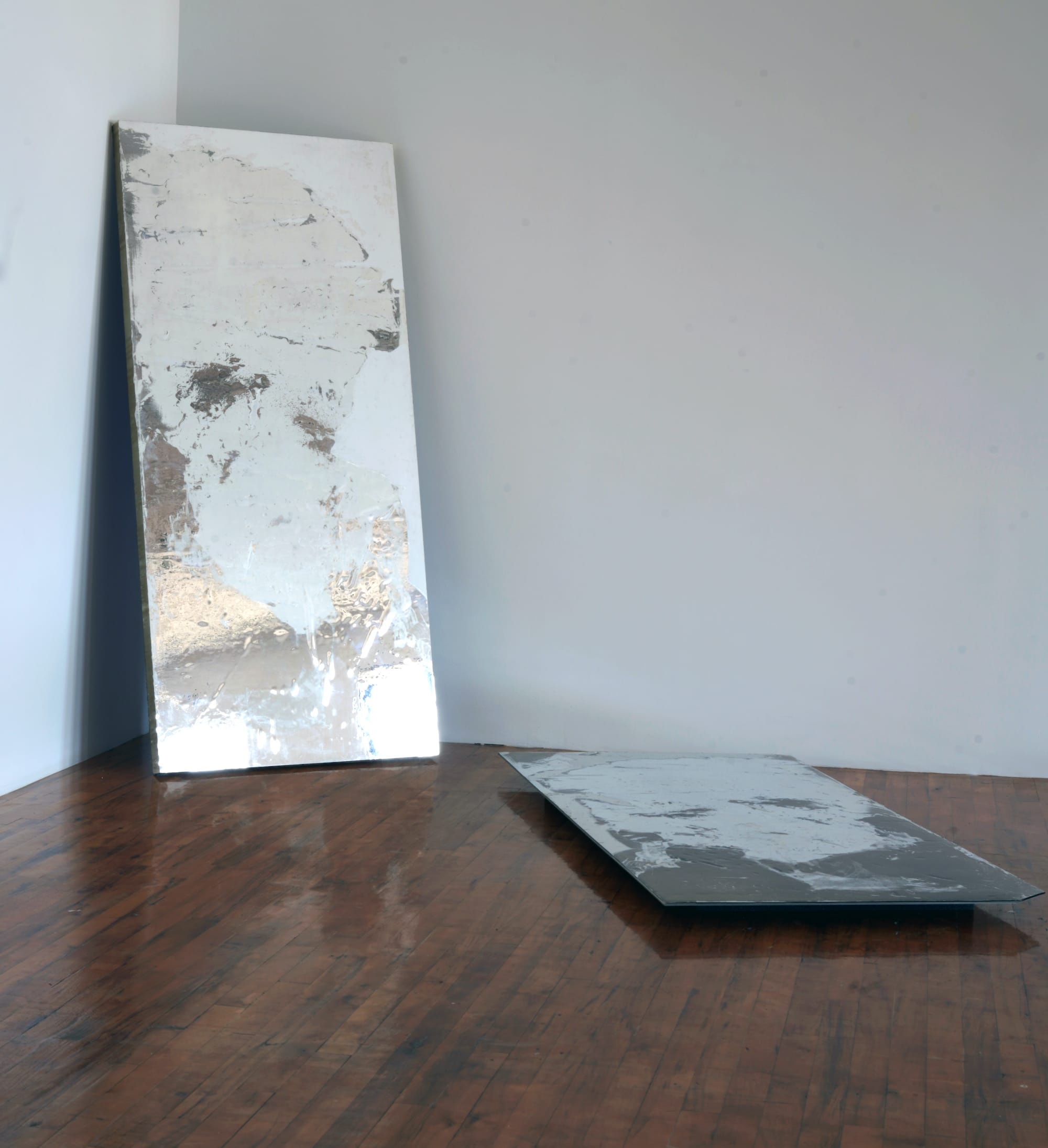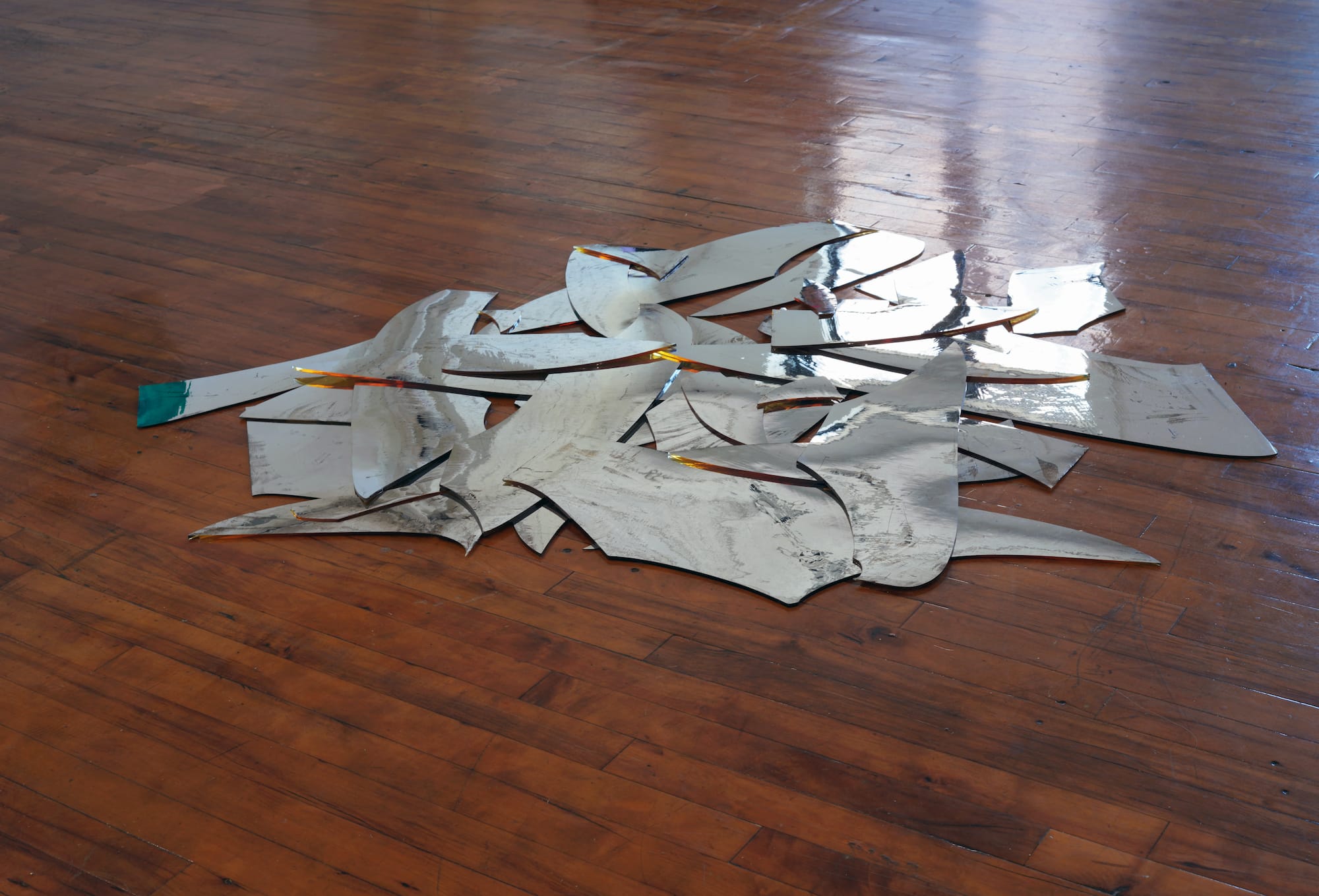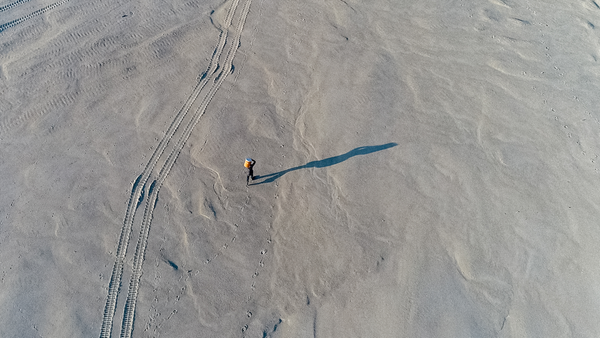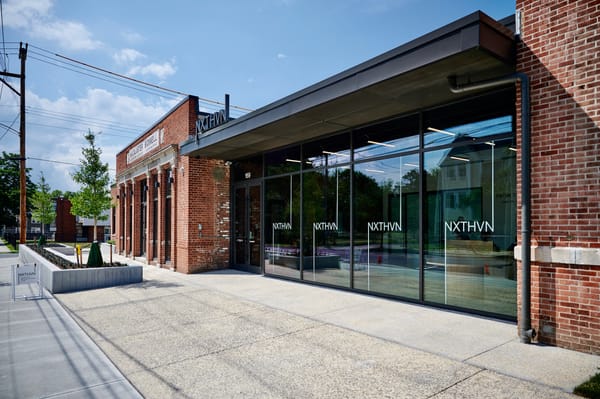Carrie Yamaoka Thrives Between the Cracks
“For years I was an emerging artist and then it seemed like I couldn’t be called emerging anymore. Let’s hope we are all emerging, always,” the artist said.
This article is part of Hyperallergic’s 2024 Pride Month series, featuring interviews with art-world queer and trans elders throughout June.
Carrie Yamaoka is an alchemist of sorts. She has been working at the intersections of photography, printing, painting, and sculpture since the 1990s, approaching the studio as a laboratory, in her words. But unlike a conventional alchemist, Yamaoka’s aim is not to create a thing or achieve an end. It’s the flux between states that destabilizes perception and refuses resolution that fascinates her. Not that the artist doesn’t make things: She’s highly attuned to her materials, which include reflective mylar and resin, and how they can be manipulated — and her surfaces, often gleaming with liquid tactility, are captivating. But the more time spent with them the less they feel like objects. Both there and not there, like mirrors, they perform the same sleight of hand to the viewer standing before them, yet their distortions render us other to ourselves.
As a queer Japanese-American artist, Yamaoka knows something about being both visible and invisible, but as she noted in our interview, there is power in the margins. She has made works that directly address sociopolitical issues, such as her Archipelagoes series (2019), photograms printed with the names of US detention sites, but even in her most abstract pieces, the unstable dynamic between the artwork and viewer speaks to vital issues of identity and recognition — who is seen or obscured, and how. And what can be subverted from those margins.
In addition to her own art practice, Yamaoka is a founding member of queer art collective fierce pussy, which took to the streets beginning in 1991 with their LGBTQ+ activism, and remains active. In 2023, the collective was featured in an exhibition at the Palais de Tokyo in Paris, as part of the project arms ache avid aeon: fierce pussy amplified, realized in chapters that include multiple exhibitions and publications. And Yamaoka’s solo exhibition Inside Out Upside Down at Ulterior Gallery in New York continues through June 29.
It’s easy to get lost in some art, and a thrill to find yourself in it. Yamaoka is one of those artists, whose work is a space of illumination. As she said in our email conversation, quoting Leonard Cohen, “there is a crack in everything, that’s how the light gets in.”
* * *

Hyperallergic: Did you have any queer mentors when you were starting out as an artist, or are there any queer figures who have been important to you?
Carrie Yamaoka: I think my friends who were artists were my mentors, most of whom were older than I was, some of whom were queer, some not. My partner, Joy Episalla, has been my mentor, and I hers, ever since we first met in 1978. I remember the first summer I arrived in New York City after graduating from Wesleyan in 1979; we went to a talk/discussion at AIR gallery and Harmony Hammond was there, holding forth. I remember thinking: okay, I am in the right place, in this city, where it is possible to be queer and/or feminist in ways that we are all just figuring out, and to make a life as an artist here.
H: As a Japanese-American artist, what kinds of barriers have you come up against in your career and do you feel like the art world has become more inclusive?
CY: We live in a society riddled with racism and homophobia and misogyny that permeates so deeply, on so many levels — and so yes, certainly I have faced challenges, some less obvious than others. I mean, if you live and work on the margins, then the so-called mainstream may not think you have much to contribute, unless you are actively performing your identity in your work, perhaps. There is a lot of power in being on the margins, too. More room for experimentation and disruption. I don’t want a seat at the table, I want to change the shape of the table — or do away with the table altogether. And even though in recent years there has been a shift toward diversity, equity, and inclusion — and many positions of power in arts institutions have changed hands, fostering more representation of artists of color and queer artists and women — there is still so much work that needs to be done. We are living through a terrifying time. Especially given the current political climate, the backlash, and the fascistic Christian nationalists working to dismantle whatever progress we have made.

H: How does your personal identity fit into your art?
CY: Although I do not make work with obvious subject matter, everything about where I come from is embedded in my work. I am a product of a variety of diasporic forces — both westward and eastward. Two of my grandparents emigrated to the US from Japan in the late 1800s, the third around 1917, and the fourth, my maternal grandmother, was White Anglo/Irish Caucasian, disowned by her family for marrying a Japanese man. World War II wreaked havoc on my parents' and grandparents' lives: internment, fierce discrimination, deportation. I grew up in an all-White suburb of New York City in the 1960s, where we were the only family of color. When I was 12, my mom decided to move to Tokyo to be closer to her father — reverse diaspora — so I spent my teenage high school years there, where I was another kind of outsider.
I came of age as a queer person here in New York in the darkest days of the AIDS crisis, in the 1980s and early ’90s. What I learned from that time — from all the people we lost, from all the agitating and action and civil disobedience we performed — how we lived and loved and died and how we survived, this has deeply impacted how I see the world. My work took a big turn in 1994 when I abandoned working with text and painterly abstraction and narrative, and that watershed moment had everything to do with what we had all lived through in those years.
H: How did fierce pussy come into being?
CY: fierce pussy was formed by a group of us who were in and around ACT UP in 1991. We wanted to channel some of the urgency and defiance of the times we were living through, and put some energy into celebrating our identities, our desires, our pleasure. It was a very fluid, roving band of dykes in that first incarnation of fierce pussy, people drifted in and out, we worked fast and bombed the walls of the streets of NY with our posters. The most recent incarnation of the group emerged in 2008 when AA Bronson invited fierce pussy to do a mini-retrospective at Printed Matter. We put out a call to everyone who had been involved back in the day and only four of us showed up to reconvene: Nancy Brooks Brody, Zoe Leonard, Joy Episalla, and myself. We realized through the process that we worked well together and still had things we wanted to say. So we have been working together as fierce pussy since then. Brody passed away late last year, and we are all still reeling from losing them. Now it is three of us. Or since fierce pussy is their own artist, four of us.

H: How does your art practice relate to your work with fierce pussy?
CY: Working collectively uses different muscles and different skills than individual practice. I revel in the fact that moves and decisions we arrive at as a collective are the result of group process — of talking through a myriad of options. And then being able to share in all the hard work, and what emerges from it is a good thing — so much less lonely than an individual practice. We laugh a lot. We each bring our own sensibilities to the work of fierce pussy, but then fierce pussy has become their own artist by now, with their own distinct voice.
H: Do you have any advice for younger queer people in creative fields?
CY: Find your tribe. Or tribes, plural. Treasure the friendships you have with other artists, because it is from that love and camaraderie and dialogue that you’ll find sustenance. If you have just one or two or three or four people with whom you can share ideas and carry on a dialogue, that is so essential.
H: What are you working on now?
CY: I have a solo exhibition, Inside Out Upside Down, now on view here in New York at Ulterior Gallery, through Saturday, June 29. It feels like a long time since I’ve shown a substantial body of work here in my hometown, so this one feels special to me. And I am embarking on a book project, a monograph, that is due to be published in May of next year by Radius Books. Also beginning the planning for Chapter 8 of arms ache avid aeon: Nancy Brooks Brody /Joy Episalla / Zoe Leonard / Carrie Yamaoka: fierce pussy amplified with artist and curator Jo-ey Tang, due to open at Participant Inc. in early March 2025. The ongoing project positions the work of the four of us in relation to each other and to the collective work of fierce pussy, the fifth artist.
H: Is there anything you’d like to add?
CY: I appreciate Hyperallergic inviting me to participate in this Pride series, though I find the term “elder” problematic, because it is a cubbyhole, a way of categorizing that feels ageist. I’m living my life and making work that is in many ways more dynamic and challenging and exciting to me than ever before. For years I was what you could call an emerging artist — another unfortunate category — and then suddenly it seemed like I hit an age where I couldn’t be called emerging anymore. Let’s hope we are all emerging, always.





